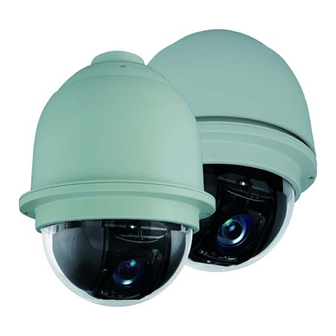Table of Contents
Advertisement
Quick Links
Recommended
Find the latest version of this and other HDZ Series IP PTZ dome camera
documents on the Honeywell Video website. Go to
http://www.honeywellvideo.com/products/cameras/ip/pt-onvif/index.html
to find your camera and view/download the latest documentation.
Refer to the Honeywell Open Technology Alliance to learn more
about our open and integrated solutions (go to:
http://www.security.honeywell.com/hota/).
HDZ Series
IP PTZ Dome
HDZ20HD
HDZ20HDE
HDZ20HDEX
HDZ30HD
HDZ30HDE
HDZ30
HDZ36E
User Manual
Document 800-11873V4 – Rev A – 07/2014
HDZ20HDX
HDZ30X
HDZ36EX
Advertisement
Chapters
Table of Contents








Need help?
Do you have a question about the HDZ20HD and is the answer not in the manual?
Questions and answers